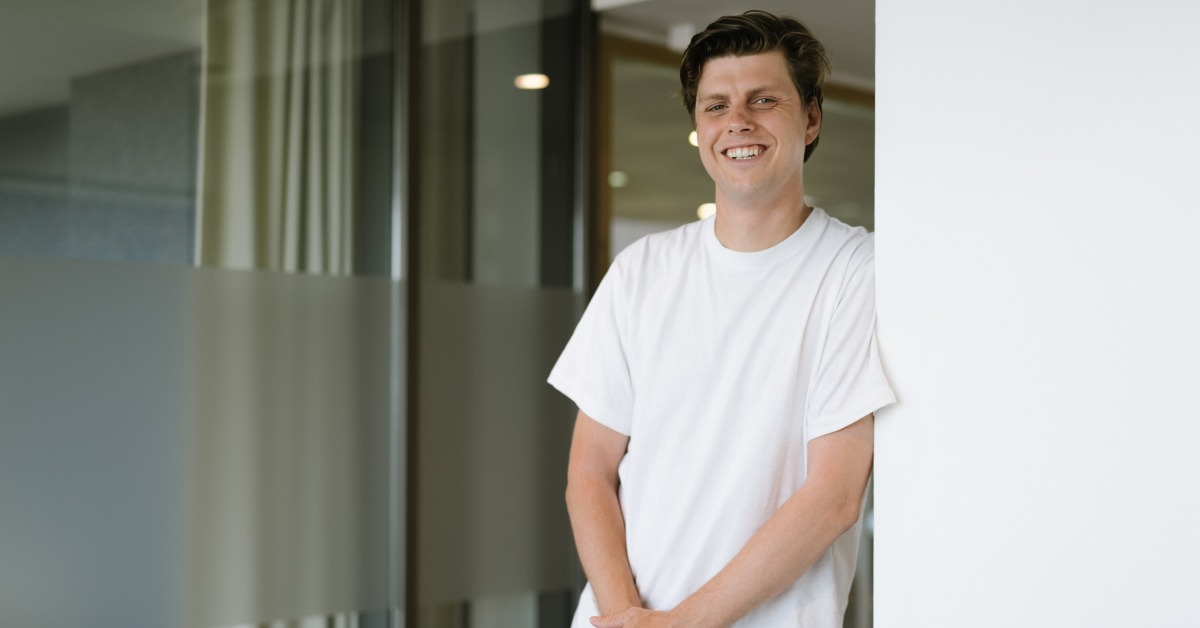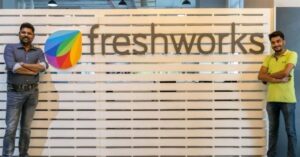Brenger CEO and co-founder Derk van der Have (image: Rise by Techleap.nl)
A forgotten mobile phone. That’s what started it all for Derk van der Have. It directly led him to co-found his startup Brenger. Instead of dealing with lost phones, it helps people transport large items across the county, without the hassle and cost of dealing with couriers or rental vans. Business is booming. After completing Techleap’s RISE programme, Brenger ramps up international expansion as they’ve just announced their first multi-million euro funding round.
The birth of Brenger
The particular phone belonged to the mother-in-law of Van der Have’s startup partner Wisse Koedam. When she forgot her phone in another city, Koedam was asked to retrieve it. It led to a lightbulb moment. Many people were already driving back and forth between those cities every day. What if there was a way for any of them to take some cargo?
Recently, the winners of the 2021 Future Hamburg Award were announced.
A transport platform inspired by Blablacar, is how Van der Have describes their initial idea. As friends from their studies in Groningen, Koedam en Van der Have were regularly bouncing business ideas off of each other. They thought about a platform to connect entrepreneurs in India with Dutch companies. Or a foil for mirrors. None of them made it into a business, but this one stuck. Brenger was born.
Choosing the entrepreneur’s life
Van der Have was going to do an internship at Heineken for his master’s degree, but he already had some entrepreneurial experience. Back when he was still a student, he ran a courier service that delivered beer in the ever-parched student stronghold of Groningen. It gave him a taste of the life of an entrepreneur, and he wanted more of that.
So Van der Have and Koedam got to work. They quickly let go of the idea to have private individuals take packages on their trips. For small packages, like lost phones, the Dutch postal service was more than sufficient. They did find many barriers when one wanted to transport larger items, like a second-hand couch. “It’s going to cost you hours to rent a van and drive back and forth. And professional moving companies can be expensive”, according to Van der Have.
Connecting cargo to couriers
The idea of Brenger was born. A platform that automatically connects private individuals with courier companies. Someone need a big item delivered? Brenger will find a courier on that route with some excess space to fulfil the order. It instantly solves two problems. Individuals buying large second-hand items from online marketplaces can easily get professional transport. At the same time, couriers can fill up their trucks more efficiently, making more money in the process and reducing CO2-emissions by not driving around empty.
“These trucks almost always have some room left”, says Van der Have. “And smaller transporting businesses don’t have the network to look for orders to fill them up. So we built an algorithm to combine cargo with existing transports.”
The first product
Van der Have probably makes it sound easier than it is. Both he and Koedam had no technical expertise. And hiring a CTO for an early-stage startup to build a very first product was not an option. So in the summer of 2016, they both borrowed €10.000 from their parents and got a reliable third party to build their platform. “That was enough to cover our costs and build the first website. On the front end, it looked and worked smoothly. But initially, there wasn’t much happening on the backend.”
Developing their product on a budget meant Van der Have and Koedam were left with manual labour. They were connecting transporters with cargo by mail or phone and were sometimes even hopping in a van themselves to make a delivery. But they quickly felt they could grow their business.
Rapid growth for Brenger
In 2018 they raised €600,000 in funding. In 2019 they added another €950,000 with the same angel investors. In 2018 they hired Hugo Jan Ruiter as CTO, which allowed them to employ developers to rebuild their entire codebase and finetune their product. In 2019 Brenger launched for the B2C market, also allowing companies, like furniture stores, to use their service to make their deliveries. A milestone was their partnership with Marktplaats.nl, the largest online marketplace for second-hand items in the Netherlands.
COVID couldn’t hamper their growth. They’ve even doubled their team, albeit digitally. With a growing network of transport businesses using Brenger, they could even promise a new, speedy service in some of the larger Dutch cities. Individuals requesting transport would be serviced within 4 hours. “We aim to keep the service at a high level”, says Van der Have. “Our customers pay upfront. That is a deliberate choice as it puts the pressure on us to perform.”
Fresh funding: ‘couple of million’
Brenger is currently active in the Netherlands and Belgium, with a network of over 350 transporting businesses. The next stop for Van der Have’s scaling business is Germany. This week, he announced Brenger has raised funding of ‘a couple of million’ euros with their existing group of angel investors for their expansion. The exact number is not disclosed.
That is not the end goal if it is up to Van der Have. Once in Germany, he wants to prove his concept works in other countries as well. In 5 years, Van der Have says, Brenger is a major player when it comes to shipping second-hand goods in Europe. Their technology will be used in at least two different continents.
Hindsight is 20/20
So far, Brenger seems full steam ahead towards world domination. When asked if there’s anything he would’ve done differently, Van der Have pauses to think for a bit. “I’m not a developer. So that means I have to think really long and hard on how to spend money on technology. We did a lot of analysing, we always tried to validate. In an ideal world, we could’ve built the code ourselves from the start. In hindsight, that would’ve made the product more scalable.”
“Rebuilding the structure of the code took longer than expected. That led to pressure from investors. But in the end, it made us more susceptible to growth.” It’s part of the learning experience that comes with being a founder, knows Van der Have. Whether it is developing technology, growing a business, or dealing with stress from growing said business: “I’m constantly developing new skills, both hard and soft.”
Connecting with RISE
Part of the learning experience was getting selected for the RISE programme from Techleap. In the exclusive programme, 10 of the most promising tech startups get the opportunity to share and discuss their growth challenges with seasoned industry experts.
“We’ve never been part of something like this”, says Van der Have. “It’s also a fantastic opportunity to connect with founders that are in the same phase as you are. You can share tips and advice on stuff like tweaking the UX of your app, or about your office space.”
‘Just go for it’
For Van der Have, having his own business has been the most valuable learning experience ever. “Many young people choose to start their careers at a large corporation. But especially when you are young, you don’t have much to lose. You’re coming off stufi (student grants or loans), so you’re probably used to making little money.”
“what you get back in experience is invaluable. The trouble you’re going through, the problems you solve. Nowhere else could I have learned so much as I did with Brenger. I always try to convince people to just go for it.”









